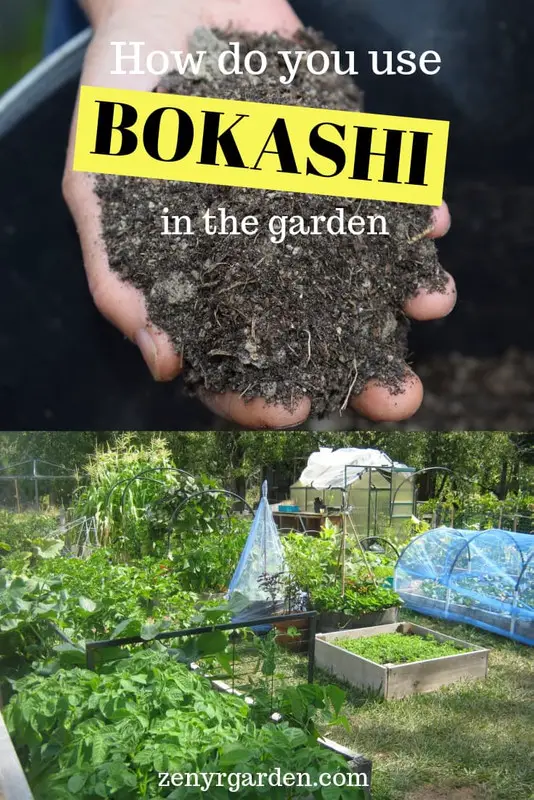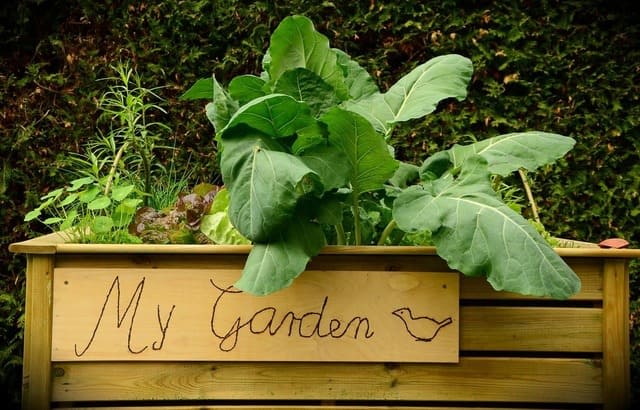If you have some bokashi done or about done, you can use it for further composting in trench composting. The bokashi liquid also works great as a plant fertilizer. It can also be used to unclog toilets & purify the water.
Let's explore some more applications of bokashi in the garden together:
#1. Feed Your Worms
As bokashi is pre-digested fermented food, it will be very easy for the worms to eat. When fed with bokashi, worms tend to grow ten times as fast & produce nutrient-rich castings. The chance of the bokashi foods getting spoiled and attracting bad molds is also lower because it has been pre-digested by the microbes.
By feeding bokashi to your worms, you also help increase the good Lactobacillus microbes in their digestive system. These little guys will eat up the sticky smell & consequently make the area around the bin smell more bearable and nicer.
Another way we can use bokashi is to:
#2. Collect the Bokashi Juice
Oftentimes, the green waste will release some moisture in the bokashi. And that liquid gets collected at the bottom of the bucket. The good news is that we can collect that juice & put it to good use.
It's recommended to use the juice the same day you collect it. Because of the fermentation process of bokashi, this juice can be a bit acidic. If you use it to fertilize your plants, dilute it with a 1:100 in water. Or 1 tsp per gallon of water.
This leachate is also great for preventing diseases & helps build the soil vitality. Alternatively, if you have toilets that are clogging up, pouring the concentrated juice down the hole can help. In some places, they also use this stuff to purify the water at low cost.
Alternatively, you can use the bokashi to:
#3. Make Compost Tea
With the amount of bokashi collected, you can soak it in water to make compost tea. Worm castings can also be added for extra nutrients. Another way we can go about this is to make a fungal mat.
To make a fungal mat you can lay your bokashi on a box of some sort with a layer of soil underneath it. After about 3 days, we may see some white fuzz developing on the top.
With this biology development, we can scoop out a part to use in our compost. Or you can use that to inoculate a substrate & make your compost tea. This will be a fungal-dominant tea that works great for breaking down more woody stuff.
And did we mention this stuff works so well to:
#4. Build Your Garden Soil
If you have a backyard or some garden space, add the bokashi directly into your soil. This can be done with trench composting or just digging and dumping.
After about 2 weeks into your bokashi process, you can take it out for burying in the garden. It works great for garden beds as well.
Depending on the weather, the bokashi may take 4 weeks to further break down especially in the summer. In the winter, it may take months & it is sometimes impossible to dig into frozen ground.
After that, when you come back, pieces of food scraps will have been broken down and is now no longer recognizable. Although some may still be recognizable because they take longer to break down like eggshells or some harder leaves.
The stuff overall should now be nicely mixed in with your soil & adds lots of nutrients back into it. It smells nice, earthy and packs a great deal of nutrients ready for take-up by your plants.
And finally, the last but not least, bokashi works like a charm to:
#5. Feed Chickens & Reduce Odor
This way of using the bokashi may be more applicable for folks who raise chickens in their backyard or homestead.
Because bokashi contains a great amount of good microbes (or pro-biotics), feeding it to your chickens will help significantly with their digestion.
From a YouTube video that we've seen, if the nutrient absorption for chickens is about 60-65% normally, with the bokashi mixed in their water or feeds, the nutrient absorption can get up to 85%. This helps their gut flora and digestion.
>> Link of the YouTube video we briefly talked about (see at minute 28:06):
How to make Low Cost Probiotics for your Livestocks ( English Sub )As these microbes can ingest odor, the poop that the chickens excrete out will also be, well, less smelly. Alternatively, you can combine the bokashi with the deep litter system for your chicken coops.
For example, we could have a bedding of indigenous microbes (IMO) at the bottom, then a layer of bokashi (lactic acid bacteria) on top & whatever else materials you find useful for the job.
The smell, though not entirely eliminated, will be much more reduced. About 4-6 handfuls of bokashi is enough for a small chicken pen. It contains billions of good bacteria!
Your chickens will be fed with good food & enjoy their good life in the coops. It will be easier on you regarding any cleaning jobs. It's a happy life that brings smiles to everybody on the farm.
Let's Go Bokashi-Ing
Above we saw together the many different uses for bokashi in the garden. Hopefully you'll find some good ideas to get started with for your own needs.
Bokashi is great for the soil–it adds vital nutrients back to it. It also helps keep the smell down & can be a yummy treat for your worms and chicks. There are so many more uses. Have fun bokashi-ing and exploring!
Here are more related bokashi posts if you'd like a look later or next:
Share or pin this post!


